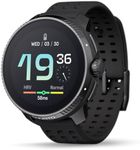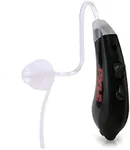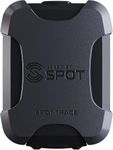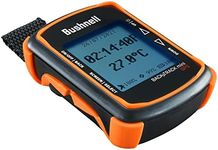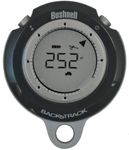Buying Guide for the Best GPS Tracking Devices For Hiking
When choosing a GPS tracking device for hiking, it's important to consider several key specifications to ensure you get a device that meets your needs. A good GPS tracker can enhance your hiking experience by providing accurate location data, helping you navigate trails, and ensuring your safety. Here are the key specs to look out for and how to choose the best one for you.Battery LifeBattery life refers to how long the GPS device can operate before needing a recharge or new batteries. This is crucial for hiking, especially on longer trips where access to power sources may be limited. Devices with longer battery life (20+ hours) are ideal for multi-day hikes, while shorter battery life (10-20 hours) may be sufficient for day hikes. Consider your typical hiking duration and choose a device that will last throughout your adventures.
Durability and Water ResistanceDurability and water resistance indicate how well the device can withstand harsh outdoor conditions. A durable, water-resistant GPS tracker is essential for hiking, as it will be exposed to elements like rain, dust, and rough handling. Look for devices with high IP ratings (IPX7 or higher) for water resistance and robust build quality to ensure they can handle the rigors of the trail.
Satellite ConnectivitySatellite connectivity determines how well the device can connect to GPS satellites to provide accurate location data. Devices that support multiple satellite systems (like GPS, GLONASS, and Galileo) offer better accuracy and reliability, especially in challenging environments like dense forests or deep valleys. For the best performance, choose a device that supports multiple satellite systems to ensure you stay on track no matter where you are.
Mapping and Navigation FeaturesMapping and navigation features include preloaded maps, route planning, and turn-by-turn navigation. These features are important for helping you find your way on unfamiliar trails and ensuring you stay on course. Devices with detailed topographic maps and the ability to download additional maps are ideal for serious hikers. If you often hike in remote areas, look for a device with robust mapping and navigation capabilities to enhance your hiking experience.
Size and WeightSize and weight refer to the physical dimensions and heft of the GPS device. For hiking, a compact and lightweight device is preferable, as it will be easier to carry and less cumbersome. However, smaller devices may have fewer features or shorter battery life. Consider your preference for portability versus functionality and choose a device that strikes the right balance for your hiking needs.
User Interface and Ease of UseThe user interface and ease of use determine how simple it is to operate the GPS device. A device with an intuitive interface, clear display, and easy-to-navigate menus will be more user-friendly, especially in challenging outdoor conditions. Look for devices with large, readable screens and straightforward controls. If you're new to GPS devices, prioritize ease of use to ensure you can quickly and efficiently access the information you need while hiking.
Additional FeaturesAdditional features can include things like SOS functionality, two-way messaging, weather updates, and fitness tracking. These features can enhance your hiking experience and provide added safety and convenience. For example, an SOS feature can be crucial in emergencies, while two-way messaging allows you to stay in touch with others. Consider which additional features are important to you and choose a device that offers those capabilities to meet your specific hiking needs.






